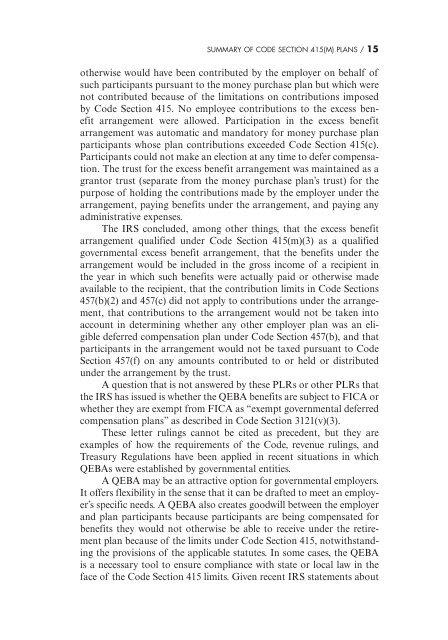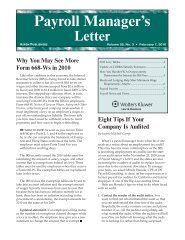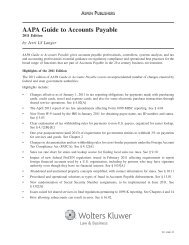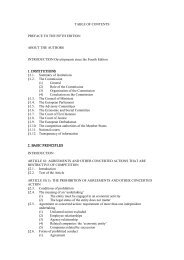journal of pension planning & compliance - Kluwer Law International
journal of pension planning & compliance - Kluwer Law International
journal of pension planning & compliance - Kluwer Law International
You also want an ePaper? Increase the reach of your titles
YUMPU automatically turns print PDFs into web optimized ePapers that Google loves.
SUMMARY OF CODE SECTION 415(M) PLANS / 15<br />
otherwise would have been contributed by the employer on behalf <strong>of</strong><br />
such participants pursuant to the money purchase plan but which were<br />
not contributed because <strong>of</strong> the limitations on contributions imposed<br />
by Code Section 415. No employee contributions to the excess benefit<br />
arrangement were allowed. Participation in the excess benefit<br />
arrangement was automatic and mandatory for money purchase plan<br />
participants whose plan contributions exceeded Code Section 415(c).<br />
Participants could not make an election at any time to defer compensation.<br />
The trust for the excess benefit arrangement was maintained as a<br />
grantor trust (separate from the money purchase plan’s trust) for the<br />
purpose <strong>of</strong> holding the contributions made by the employer under the<br />
arrangement, paying benefits under the arrangement, and paying any<br />
administrative expenses.<br />
The IRS concluded, among other things, that the excess benefit<br />
arrangement qualified under Code Section 415(m)(3) as a qualified<br />
governmental excess benefit arrangement, that the benefits under the<br />
arrangement would be included in the gross income <strong>of</strong> a recipient in<br />
the year in which such benefits were actually paid or otherwise made<br />
available to the recipient, that the contribution limits in Code Sections<br />
457(b)(2) and 457(c) did not apply to contributions under the arrangement,<br />
that contributions to the arrangement would not be taken into<br />
account in determining whether any other employer plan was an eligible<br />
deferred compensation plan under Code Section 457(b), and that<br />
participants in the arrangement would not be taxed pursuant to Code<br />
Section 457(f) on any amounts contributed to or held or distributed<br />
under the arrangement by the trust.<br />
A question that is not answered by these PLRs or other PLRs that<br />
the IRS has issued is whether the QEBA benefits are subject to FICA or<br />
whether they are exempt from FICA as “exempt governmental deferred<br />
compensation plans” as described in Code Section 3121(v)(3).<br />
These letter rulings cannot be cited as precedent, but they are<br />
examples <strong>of</strong> how the requirements <strong>of</strong> the Code, revenue rulings, and<br />
Treasury Regulations have been applied in recent situations in which<br />
QEBAs were established by governmental entities.<br />
A QEBA may be an attractive option for governmental employers.<br />
It <strong>of</strong>fers flexibility in the sense that it can be drafted to meet an employer’s<br />
specific needs. A QEBA also creates goodwill between the employer<br />
and plan participants because participants are being compensated for<br />
benefits they would not otherwise be able to receive under the retirement<br />
plan because <strong>of</strong> the limits under Code Section 415, notwithstanding<br />
the provisions <strong>of</strong> the applicable statutes. In some cases, the QEBA<br />
is a necessary tool to ensure <strong>compliance</strong> with state or local law in the<br />
face <strong>of</strong> the Code Section 415 limits. Given recent IRS statements about






